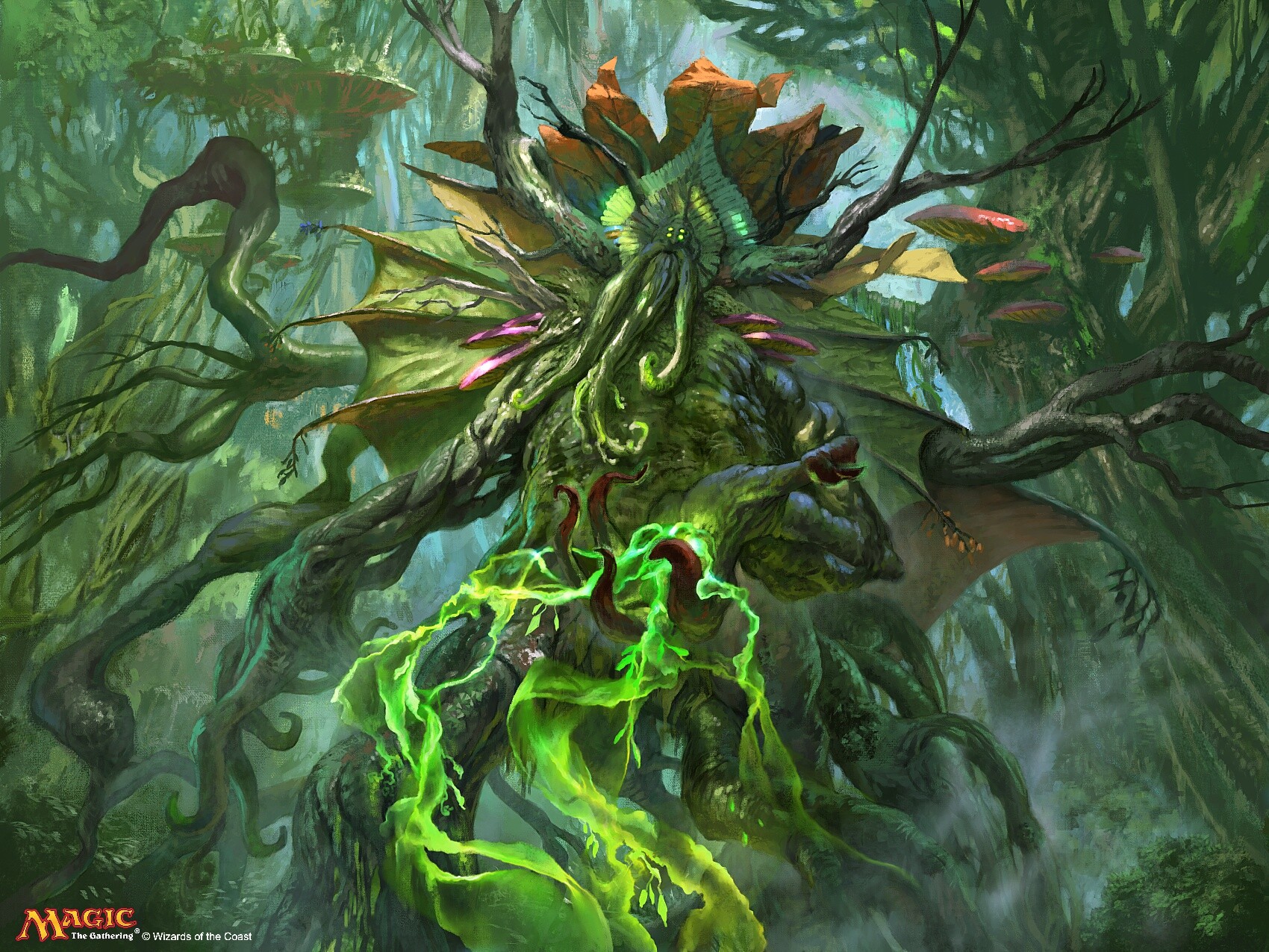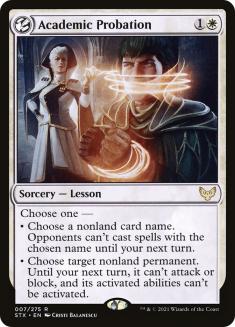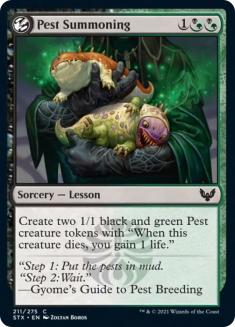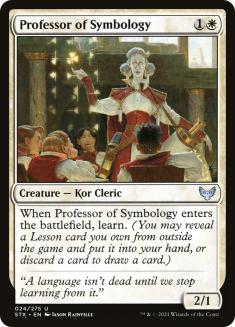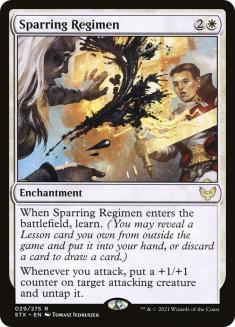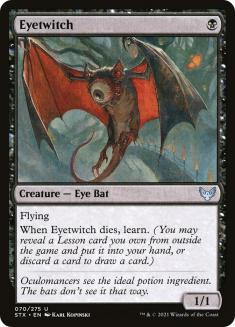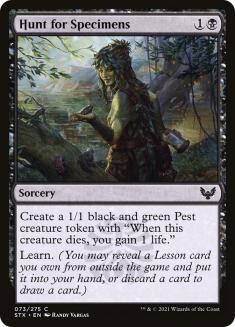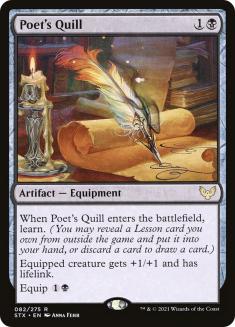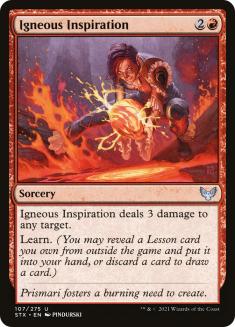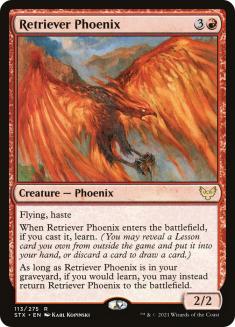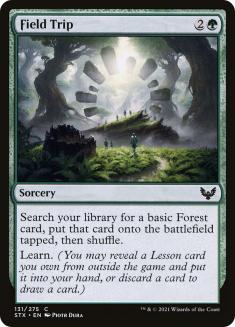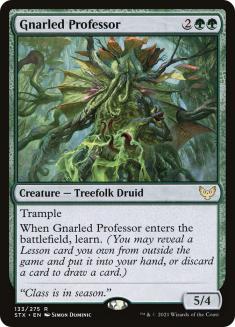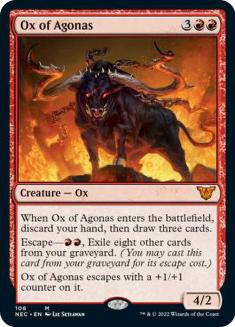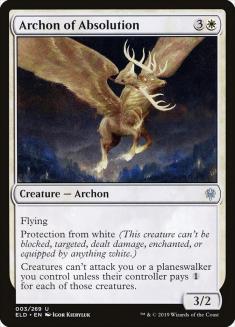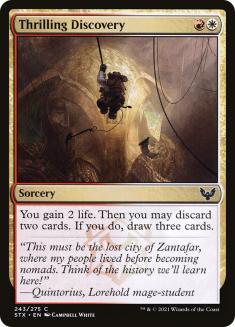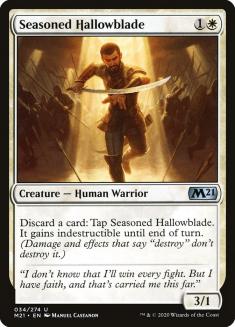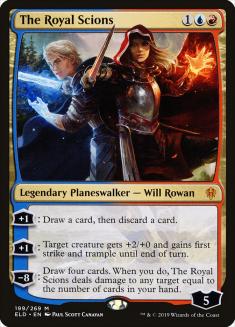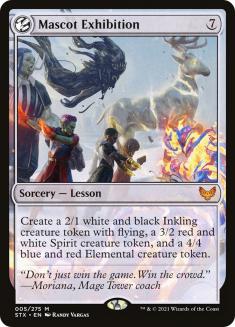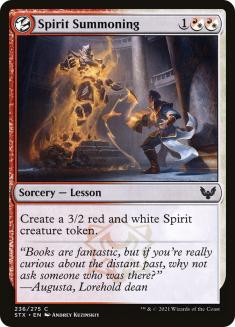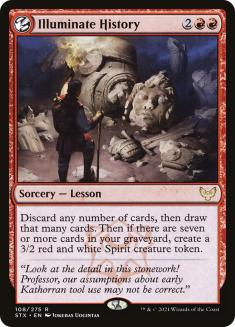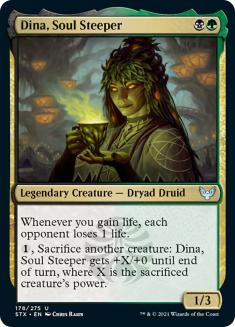I’m definitely in the minority of people defending Strixhaven as a powerful set. I think the two years since War of the Spark have made people forget what spell-based sets that shake things up look like. They look weird, with a lot of cards that do unique stuff in ways that are less obviously powerful the way the last ten sets were powerful, and that is Strixhaven to a T.
One of those unique things is the learn mechanic and the Lessons associated with it. There are 21 cards with learn and there are twenty Lessons to find with them. That’s about 15% of all Strixhaven cards linked to this mechanic, and you think none of them are going to come close to Standard play?
Let’s actually sit down and take a look at what you can do with all of them.
Most of the Lessons would be pretty solid cards if they cost one less to cast: model Pest Summoning as a Raise the Alarm variant or Containment Breach as Naturalize with upside. If they didn’t have learn, most of the learn spells would be really good for one less mana: Professor of Symbology is just Savannah Lions that learns for one more mana.
So, you pay one extra mana on the front half, and one extra on the back half, and you get a card out of the equation. You know what else sounds like spreading a two-mana investment for an extra card?
The rate on return for learn and Lessons is really similar to the rate on investigate. Not that people were slamming every investigate card into their decks the way they are Adventures, but the best handful of investigate cards ended up being pretty darn good. I don’t think any of the learn cards are quite Tireless Tracker, but the same metric of the best few being good enough to see play applies.
So, which are those?
Of those original 21, these nine learn cards are all within the Standard playable range. Let’s break them down a bit.
Let’s start with the best category — the cards that are just good rates. I would be happy to just play Professor of Symbology, Gnarled Professor, and Igneous Inspiration in decks of their colors.
Eyetwitch, Hunt for Specimens, and Field Trip are all cards you’re only playing if your deck is dedicated to doing some specific thing they enable. With Eyetwitch and Hunt for Specimens, that thing is either a sacrifice strategy or possibly Winota, Joiner of Forces, finding Pest Summoning most of the time. It might be time to revisit some of the Ayara, First of Locthwain decks I pitched early in Kaldheim preview season since all these black creatures trigger the drain ability with Awaken the Blood Avatar as a big finisher.
With Field Trip, that’s a really green-heavy Ugin, the Spirit Dragon ramp deck finding basically anything that makes Field Trip a slightly more flexible Cultivate, but it’s also hard to argue for that over Emergent Ultimatum.
Next are the creature enhancements. Poet’s Quill is basically the same card as Shadowspear, but as a cantrip it’s significantly more exciting especially when the card you find is always a creature if you need it.
Sparring Regimen is Luminarch Aspirant, but that similar comparison is much more of a stretch. Luminarch Aspirant is two-cost, two-power on the first turn cycle and is already a good rate on the second turn it survives. Sparring Regimen is three-cost, one-power and really takes until the third turn as three power and a card drawn to be good enough. Getting the Lesson creature later on also matters a lot less when you get an immediate benefit from attacking with something. It feels like you need to answer a few specific questions in order to want it over Maul of the Skyclaves.
Then there’s Retriever Phoenix, a weird outlier which bridges well into the next topic of discussion.
Teacher-Student Ratios
How many Lessons do you need to find with your learn cards?
If you’re just playing a single playset of a learn card, I don’t think you need the full set of sideboard Lessons to match. You don’t need a full four Equipment for four Stoneforge Mystic, and that’s even considering you will draw those Equipment from your deck. If you manage to draw a Lesson from your sideboard with your draw step, the Arena developers will be really impressed. You might want more for a full toolbox, but that’s definitely doing work that’s above and beyond for your cards.
With a playset of a learn card in your deck, you probably only need two or three Lessons to find in your sideboard. Two sorta implies you’re expecting every game to end early, since even if you can use the discard-draw mode in a pinch you really don’t want to, and already I expect a lot of Lesson packages to be two copies of the generic one you want to find and one flex slot. To go back to Stoneforge Mystic, this is the classic “two Batterskull, one flex Equipment” package.
If you go above that first playset of learners, you’ll trend close to the two-to-one ratio to ensure you keep finding cards. With eight learn cards, I’m not really interested in more than five Lessons. The loose math I’m using is half plus one, under the logic that seeing more than half your deck is an unlikely event in most games and drawing significantly more than half your learn cards in a game is even more unlikely. And again, you don’t even have to plan for the most likely way to see more than half your deck in Standard, which is “What if Soaring Thought-Thief mills my search targets?”
But five cards is a lot of sideboard space to use these days. More than competing with Throne of Eldraine on raw power level, the learn cards are competing with Throne of Eldraine sideboard hate for slots. The first few learn cards are fairly free, but for Best-of-Three matches, the second set of them starts having real costs.
The other reason to not overload on learn cards is there are diminishing returns casting Lessons. They’re action at a cost, and you start getting into logjams where you cast your learn card, then cast the Lesson, then draw more learn cards in the process, and have more spells than you have mana to cast them. Unlike traditional card draw, you aren’t accumulating lands at a faster pace as well when learning, so the typical churn where drawing more cards gives you more spells and the resources to cast them is absent.
Which brings us back to Retriever Phoenix. Recurring the Phoenix replaces your learn, so it doesn’t really count towards your sideboard Lesson requirements. It might even reduce the number of Lessons you want since a free 2/2 haste creature is better than any Lesson you could find. But at the same time, you don’t really want multiple copies of Retriever Phoenix since each learn only recurs the first copy.
You end up in a bit of a bind with Phoenix where you want to build your deck with a little more learn to maximize recurring it, but you don’t really want to max out on Phoenixes and draw multiples, but also your desired sideboard Lesson count varies a lot depending on whether you draw Retriever Phoenix in a game.
This is all to say I’m into trying Retriever Phoenix and maximizing it; I just have real concerns that doing so creates some awkward issues.
Retriever Phoenix brings up another interesting point about learn: it’s always just another piece of cardboard. Even if using learn as a discard-draw rummage is always a bad rate, compare Professor of Symbology versus Fissure Wizard; learn fuels your better-rate looting effects really well. Those are also the same cards you want with Retriever Phoenix so you don’t have to cast the card to get it into your graveyard.
There aren’t a ton of great discard outlets in Standard to abuse this with, but I’m certainly in for trying to discard Retriever Phoenix to The Royal Scions, or just freerolling it off Seasoned Hallowblade. There are also a couple of four-drop planeswalkers that are fine discard outlets – Narset of the Ancient Way and Liliana, Waker of the Dead – and Flamethrower Sonata on the back of Torrent Sculptor, but those feel less like active reasons to go down this road and more incidental pickups when you’re already playing learn-Lesson packages.
Finalized Curriculum
Enough talking about structure. Let’s throw down some lists.
Creatures (30)
- 3 Giant Killer
- 4 Seasoned Hallowblade
- 3 Skyclave Apparition
- 4 Luminarch Aspirant
- 2 Halvar, God of Battle
- 3 Usher of the Fallen
- 2 Reidane, God of the Worthy
- 4 Professor of Symbology
- 1 Mila, Crafty Companion
- 4 Retriever Phoenix
Planeswalkers (3)
Lands (23)
Spells (4)

This is a classic deckbuilding study. Take a couple of things you know work — Mono-White Aggro creatures and the Jeskai Cycling lightly tri-color mana — and splice in the new mechanic. You’re leaning on The Royal Scions and Sword of the Realms to make Professor of Symbology a relevant body, and those also make the Human Warrior tokens off Usher of the Fallen more appealing. Three colors also give you a good spread of Lessons to select from, and it’s even possible this deck wants to play no basics and splash Containment Breach or Confront the Past off additional Pathways.
I do like that this deck maximizes the toolbox nature of learn without really giving up redundancy. You have three token generating Lessons that naturally bridge if you want to find progressive token makers with multiple learners. Spirit Summoning (or Inkling Summoning) to start, then Illuminate History works in low-land mid-game situations and Mascot Exhibition in higher-land-count spots.
Being aggressive also makes Teachings of the Archaics viable. It’s really weird to have a card that checks if your opponent has more cards in hand…. after you put yourself up a card to learn it into your hand. I wouldn’t be surprised if that card gets cut from every deck forever after a small number of games based on this self-antisynergy.
Creatures (21)
- 3 Ayara, First of Locthwain
- 1 Lampad of Death's Vigil
- 3 Serrated Scorpion
- 4 Whisper Squad
- 3 Skyclave Shade
- 3 Extus, Oriq Overlord
- 4 Eyetwitch
Lands (22)
Spells (17)

Taking a list I talked about a couple of months ago when Blightstep Pathway was first previewed and splicing in Awaken the Blood Avatar and learn cards brings you this mostly black Mardu Sacrifice deck. I’m also with Ross on Awaken being really strong. It’s just a super-high-power, mana-efficient finisher that gives Rakdos strategies some much-needed closing power.
These cards do all make me want Dina, Soul Steeper since it really amplifies the Pest token plus Bastion of Remembrance setup. Unfortunately you can’t stack multiple Dinas so it doesn’t feel like a card you want to solo-splash for, but there’s probably a Jund Sacrifice list that makes sense because Korvold, Fae-Cursed King is still a broken card.
And finally, we have the obvious.
Creatures (28)
- 2 Scavenging Ooze
- 4 Lovestruck Beast
- 4 Edgewall Innkeeper
- 4 Bonecrusher Giant
- 4 Brushfire Elemental
- 4 Kazandu Mammoth
- 1 Arni Brokenbrow
- 2 Dragonsguard Elite
- 3 Gnarled Professor
Lands (23)
Spells (9)

What if your bulky Questing Beast-scale threat in Gruul Adventures was also a two-for-one and also a Embereth Shieldbreaker? And it had a fifth power and found a backup body to really set up The Great Henge?
This is the role I expect learn to play the most in Standard. You cast a learn creature, and it’s either a well-stated Reclamation Sage or gives you a free extra body. Nothing super-special, but it does all the jobs you could ever want the card to do in midrange mirrors.
If you still need to upsell it to yourself, Gnarled Professor is a reverse Adventure where you pay for the creature first and the spell shows up after. If a comparison to investigate wasn’t enough, a stronger mechanic may change your mind.

